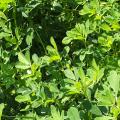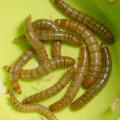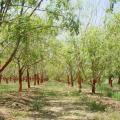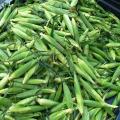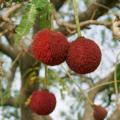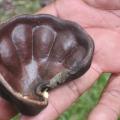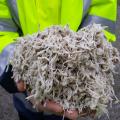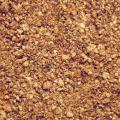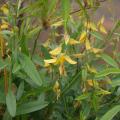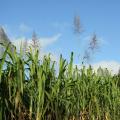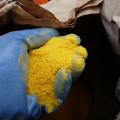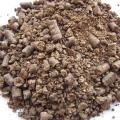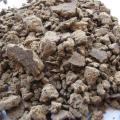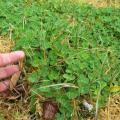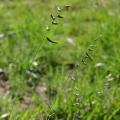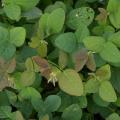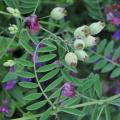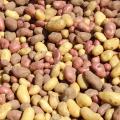Feedipedia news
Feedipedia will participate next week in the Global Forum for Animal Feed and Feed Regulators convened by the Food and Agriculture Organization (FAO) in Rome. Our team will deliver a presentation on the afternoon of 2 October titled Innovative protein and feed sourcing: an ongoing EU concern and will host a side event during lunch on 3 October entitled Feedipedia: Knowledge for All, Supported by All?
Feedipedia is delighted to announce that Dr. Jacobo Arango has been appointed as the new Leader of the Tropical Forages Program.
As we welcome Jacobo to this key role, we also extend our deep gratitude to Dr. Michael Peters, retiring after 25 years of exceptional service, whose vision and dedication have shaped the Tropical Forages Program and left a lasting legacy.
Let's congratulate Jacobo Arango and celebrate Michael Peters’ extraordinary contributions!
Explore Feedipedia
|
Fenugreek (Trigonella foenum-graecum L.) is an annual herbaceous legume suitable... Read more |
Mealworms are the larvae of two species of darkling beetles of the Tenebrionidae family, ... Read more |
Moringa (Moringa oleifera Lam.) is a multipurpose tropical tree. It is mainly... Read more |
|
White clover (Trifolium repens L.) is a creeping, herbaceous, perennial legume... Read more |
Ear maize (ear corn in American English) consists in whole maize ears including the cobs... Read more |
African locust bean (Parkia biglobosa (Jacq.) G.Don and Parkia filicoidea ... Read more |
|
Guanacaste (Enterolobium cyclocarpum (Jacq.) Griseb.) is a fast growing forage... Read more |
Sugarbeet pulp is the fibrous, energy rich by-product resulting from the water extraction... Read more |
Cottonseed meal is the by-product of oil extraction from cotton seeds. As a protein-rich... Read more |
|
Brewers yeast is a by-product from the breweries, which use the micro-organism and fungal... Read more |
Sunn hemp (Crotalaria juncea L.) is a multipurpose tropical and subtropical... Read more |
The honey locust (Gleditsia triacanthos L.) is a legume tree up to 25-45 m high... Read more |
|
The sugarcane plant (Saccharum officinarum) is primarily cultivated for sugar... Read more |
Corn gluten meal is a by-product of the manufacture of maize starch (and sometimes... Read more |
Peanut meal is the by-product obtained after the extraction of oil from peanut seeds (... Read more |
|
Linseed meal is the by-product of oil production from linseeds (Linum usitatissimum... Read more |
Subclover (Trifolium subterraneum L.) is a much valued annual legume forage used... Read more |
Spotted brachiaria (Brachiaria nigropedata (Munro ex Ficalho & Hiern) Stapf... Read more |
|
Samoan clover (Desmodium scorpiurus (Sw.) Desv.) is a vigorous perennial... Read more |
Purple vetch (Vicia benghalensis L.) is a climbing herbaceous legume from the... Read more |
Potato tubers are the subterranean swollen, starchy tubers of the potato plant (... Read more |
Pages
Recent resources
 Opinion paper: Phasing out of the aid provided to the livestock sector during expectedly recurrent emergencies
- Makkar, 2024. animal
Opinion paper: Phasing out of the aid provided to the livestock sector during expectedly recurrent emergencies
- Makkar, 2024. animal
Open access opinion paper that makes a case that the emergency aid do more harm than good to African countries. It is valid for all the fields of agriculture but has direct consequence for animal agriculture. The context here is the aid provided during emergencies that are foreseeable recurrent.
The role of livestock in food security, poverty reduction and wealth creation in West Africa
- Molina-Flores et al., 2020. Food and Agriculture Organization of the United Nations Accra, 2020
Livestock is key to 377 million people in West Africa and in some countries, up to 60% of the population is involved in livestock production. The demand for animal products is increasing with population growth, urbanization, growing middle class, and due to shifting consumer preferences towards animal products. To meet this growing demand, countries in West Africa must engage in accelerated sustainable livestock production undertaking. Livestock development is key to eradicate hunger and poverty. This book attempts to provide up-to-date, and reliable information on the potentials, opportunities, and challenges of the livestock subsector in West Africa.
Pulses and their by-products as animal feed
- Sherasia et al., 2017. In: Calles, T.; Makkar, H. P. S. (Eds), FAO, Food and Agriculture Organization of the United Nations, Rome, Italy
This document provides a state-of-the-art review of the recent research (published and unpublished) on the use of pulses and their by-products as animal feed. It aims at raising awareness on the use of pulses and their by-products. It highlights the nutritional role of pulses and pulse by-products as animal feed and is a contribution to the legacy of the 2016 International Year of Pulses. This document will further enhance the use of these feed resources in other continents, besides Asia, where many pulse by-products are simply dumped. It is also expected that the synthesis presented contributes to make the use of pulses and their by-products as animal feed more efficient. This document will be useful for extension workers, researchers, feed industry, policy-makers and donors alike.











